Don't wanna be here? Send us removal request.
Text
Asante Kingdom
The Asante Kingdom was located in Ghana.
They were resistant to British rule and fought many wars called the Anglo-Ashanti Wars.
The Ashanti people were given a region in the mid-south part of Ghana that now has 30 district today.
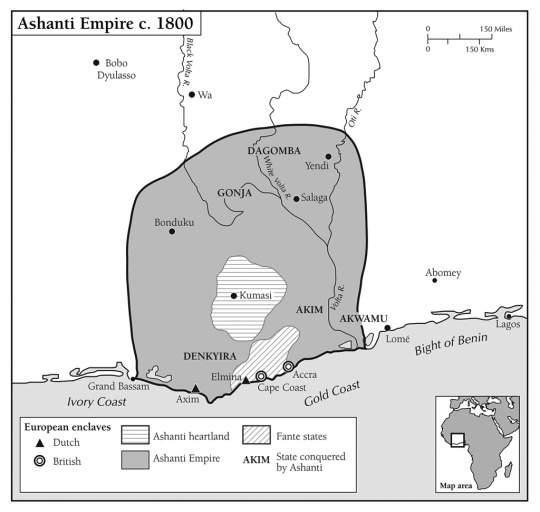
0 notes
Text
Gender Roles-Kente Cloth Production
Men are the main weaver’s for Kente Cloth, the woman usually do not do it, but she do get lessons to learn how to weave kente cloth.
It is considered a taboo for women to wove cloth.
Women’s participation is generally limited to auxiliary roles leading to a certain amount of interdependence between women and men. Women prepare the dye used for stenciling adinkra and in many cases they undertake the sale of the cloth.
Men produce cloth that is relatively less labor intensive than what women produce.
Further, the prestigious status of both adinkra and kente translates into social and economic advantages for men. The importance of adinkra and kente producing communities as tourist destinations is an additional source of status for the male producers of these textiles.
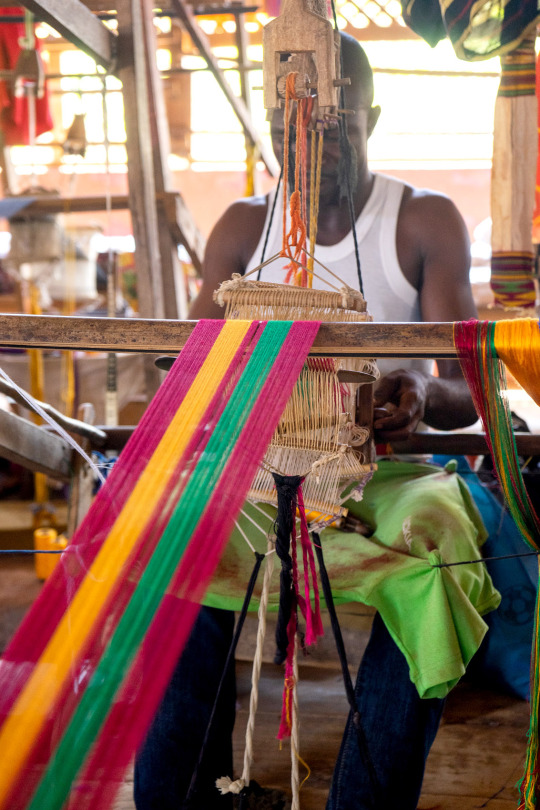
0 notes
Text
Origins of Kente Cloth
Originated with the Ashanti people of Ghana. It dates back 375 years, conceived in a village called Bonwire.
Kurugu and Ameyaw, two brothers from the village, went hunting one afternoon and came across a spider spinning a web. They were amazed by the beauty of the web and thought that they could create something like it. Upon returning home, they made the first cloth out of black and white fibers from a raffia tree.
0 notes
Text
Kente Cloth
Kente Cloth has many different patterns and colors that have different symbolism behind them. I will share a few of the colors and what it represents. You can also look at more from the board that I brought with the different patterns and colors to create your own.
Gold-royalty and richness
Red-death, funerals, mourning
Blue-peace, love, and harmony
Purple-feminine, worn by girls and women
White-pureness, cleansing rites and festivals

0 notes
Text
Patterns of Kente Cloth
This is the Afa pattern and this pattern means I have taken it(Picture 1)
This is called the Nkyimkyim and it has a zig-zag pattern, this means that life is not a straight path. (Picture 2)

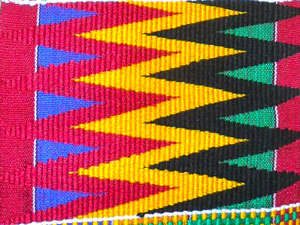
0 notes
Text
Men’s Traditional Kente Wear
One way they wear their kente cloth is the Kyere w’anatu style: which means to show your legs. This style of wearing kente cloth shows his prowess and physique. They wear the clothes above their knees and shows that they can the cloth artistically.
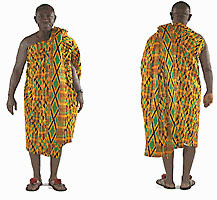
0 notes
Text
Men’s Traditional Kente Wear
The next style is called the Okatakyie. This style is mainly worn by chiefs and this means brave men. They Draw more of the cloth up around their shoulder so that the cloth is above the knees. Instead of laying the material over your left shoulder, they rest the cloth on their left arm in which it creates a voluminous and flamboyant look.
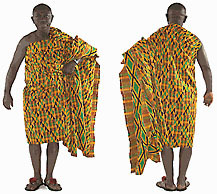
0 notes
Text
Traditional Women’s Kente
Women wear their kente cloth differently also. Women's kente can also be worn wrapped underneath your arms, leaving your shoulders bare; as a skirt over which a long blouse is worn; or as a wrap around your neck.

0 notes
Text
References
https://www.khanacademy.org/humanities/art-africa/west-africa/ghana/a/kente-cloth
https://www.diyanu.com/collections/women
https://africa.si.edu/exhibits/kente/design2.htm
http://digitalcommons.wcl.american.edu/cgi/viewcontent.cgi?article=1115&context=jgspl
https://csdt.rpi.edu/culture/kentecomputing/origins.html
0 notes





